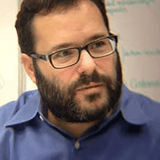Summary
In this talk, Boon will share learnings from understanding systems thinking at a deeper level, and how this has shaped and improved his approaches to large, messy problem spaces as an senior individual contributor working on product / service design and strategy in the enterprise. Boon's perspectives on systems draw from a mix of systems perspectives, which include Checkland's soft-systems methodology, Capra's systems view of life, and Ricigliano's Systems Practice approaches. He'll also share some of the practicalities and challenges of learning and applying systems thinking (which hasn't been simple), while having to deliver on UX outcomes at the same time.
Key Insights
-
•
Enterprise UX involves designing not only for users but also navigating organizational change with stakeholders.
-
•
User-centered design alone is too narrow; a broader view includes organizational value and complex interdependencies.
-
•
Polarity mapping helps balance interdependent opposites, avoiding reductive linear thinking.
-
•
Backcasting with both utopian and dystopian futures surfaces diverse assumptions and perspectives.
-
•
Simple tools like stakeholder maps and relationship patterns effectively initiate systemic thinking with teams.
-
•
Renaming services using verbs, inspired by UK Government Digital Service, clarifies user navigation across complex workflows.
-
•
Embedding user voice in product qualities aligns design outcomes with real user needs, creating self-perpetuating systems.
-
•
Sharing design assets openly across departments fosters unexpected collaboration and system-wide improvements.
-
•
A Slack channel posting daily user research snippets turns isolated data into a living social system of awareness.
-
•
Building trust and empathic understanding with stakeholders is foundational for successful systemic change interventions.
Notable Quotes
"Systems thinking for enterprise UX is like doing research and design on ourselves, our colleagues, and our stakeholders."
"Enterprise UX is really hard because we design for our users and also for the change that our colleagues have to navigate."
"You can’t just bulldoze fresh standards all over the place because complexity requires balancing flexibility and simplification."
"Polarity mapping forces you to put interdependent opposites in connection so you balance them rather than ignore one."
"Change doesn’t happen because we produce a product, but through the behaviors people adopt as they respond to change."
"Good services are verbs, bad services are nouns — naming services as actions clarifies user pathways."
"As long as you’re doing nudges and sharing with the right intent, behavior begets behavior and things start catching on."
"I’ve learned more from my stakeholders than I’ve had to teach them; I put myself in their shoes to understand complexity."
"Systems work ultimately comes down to working with people and trusting relationships."
"Systems thinking is about embracing complexity and meeting people where they are, even when it’s very hard."
Or choose a question:















More Videos

"The hardest part about remote is making design reviews feel collaborative and team-based."
Adam Cutler Karen Pascoe Ian Swinson Susan WorthmanDiscussion
June 8, 2016

"Sometimes the director is the most senior design person in the org and ends up playing the executive role without the title or support."
Peter MerholzThe Trials and Tribulations of Directors of UX (Videoconference)
July 13, 2023

"Nobody knows who’s supposed to decide what around digital, and that’s the problem."
Lisa WelchmanCleaning Up Our Mess: Digital Governance for Designers
June 14, 2018

"Sustainable practices are not just a luxury; they are a necessity for our survival."
Vincent BrathwaiteOpener: Past, Present, and Future—Closing the Racial Divide in Design Teams
October 22, 2020

"Engineers can be our biggest allies in making really important process changes."
Brenna FallonLearning Over Outcomes
October 24, 2019

"Factory owners manipulated people’s time so much that workers were afraid to carry a watch."
Tricia WangSpatial Collapse: Designing for Emergent Culture
January 8, 2024

"Diverging and converging around the business model canvas helped us test and prototype delivery methods for the value propositions."
Edgar Anzaldua MorenoUsing Research to Determine Unique Value Proposition
March 11, 2021
"Context-related data gathered through qualitative research is the first to reach our decision-making centers in the brain."
Designing Systems at Scale
November 7, 2018

"Ethics evolve faster than law; just because something is legal doesn’t mean it’s ethical."
Erin WeigelGet Your Whole Team Testing to Design for Impact
July 24, 2024
















